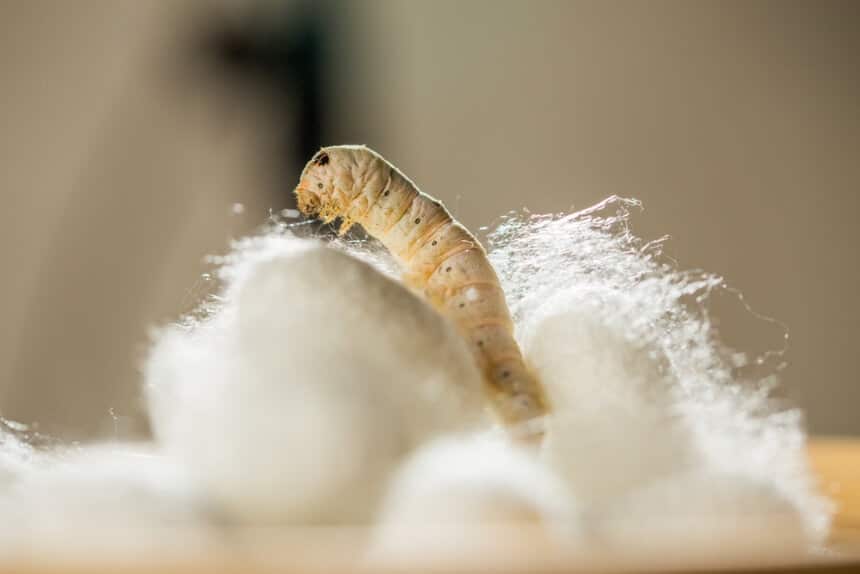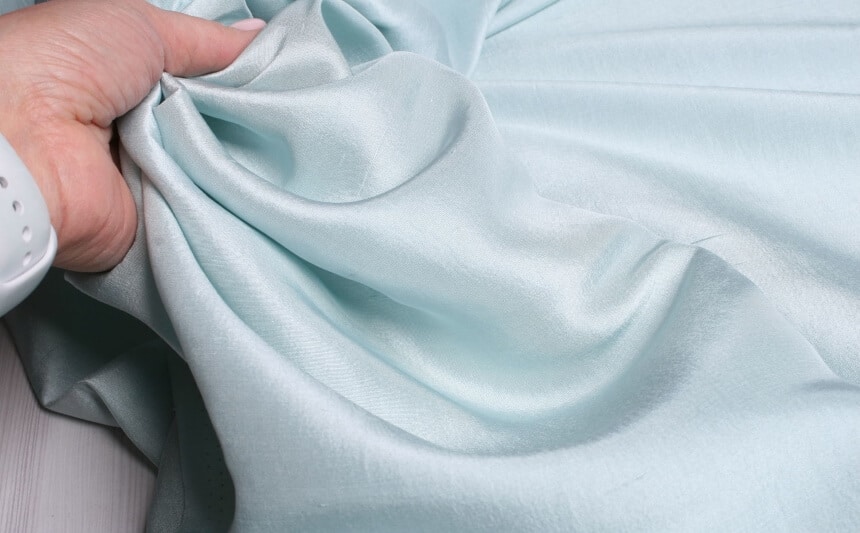

Shantung fabric Trusted Source Shantung (fabric) - Wikipedia en.wikipedia.org is a type of fabric primarily known for its irregular ridges, commonly called slubs. The shantung fabric is highly rated, and you will mostly see it used for wedding gowns and special occasions.
The origin traces back to a coastal province of China called Shandong, and the use of the fabric dates very far back in history. It was traditionally used for bridal gowns, and now, this silk stood the test of time to become the most rated in the fashion industry.
Many people have difficulty picking fabric to fit into occasions and events. There are many things to put into consideration: stretchability, breathability, and many more. This article will show you an in-depth view of the Shantung Fabric. You will get to know more about its origin, advantages, disadvantages, and more. Read on and enjoy.
Shantung fabric is a silk type of fabric known for its rough texture. The roughness is due to its irregular ridges called slubs. However, the coarseness may vary depending on the specific yarn type.
Shantung silk fabric is light and gives a unique feel. Being one of the lightest in the market, it is usually in high demand.
You will find it relatively easy to identify the fabric because it has a shantung finish on one side and a relatively smooth and shiny sateen on the other.
Polyester Shantung Fabric originated from a coastal province in the East region of China. It was mainly used for bridal dress and royal purposes. Although there is no specific documentation recording the date when the fabric came into existence, rough estimations and records date it back to the Renaissance period.
To date, a significant amount of Shantung fabric comes from the same province. Although at some point, it seemed as though the Shantung fabric was fading out of existence because of its coarse feel. Back then, the majority went to the markets to opt for the smoothest option; since Shantung fabric is not so smooth, many overlooked it.
However, the Shantung fabric still stood the test of time as fashion began to evolve gradually. Now, individuals consider a lot of things in a fabric aside the smoothness. Due to the perfect qualities of Shantung Fabric, it slowly rose to the top once more.
Fast forward to today, Shantung fabric is now a popular option for special and classy occasions. Many use it for wedding gowns, classic men’s outfits, and many more.
Synthetic variants also came into existence, but they could not stand a chance with the natural Shantung fabric. The naturally woven variant has many unique properties that the synthetic version cannot compete with; within a short while, the synthetic version remains irrelevant.

Shantung Fabric presents some of the best properties in the clothing and textile industry. Here are the significant advantages of the Shantung fabric:
It is almost impossible to fault the Shantung fabric as it is mostly everyone’s favorite. However, for preference’s sake, some individuals dislike fabrics with somewhat irregular or coarse surfaces. While Shantung fabric is thin and crisp, some may find the uneven ridges uncomfortable. On the bright side, sources and reviews mention Shantung Sateen Ivory and the Shantung Satin Faux Silk Dupioni as an excellent and comfortable choice.
Identifying Shantung fabric may prove a little difficult for those hearing it for the first time. However, through its physical properties, you would find it relatively easy to identify with time. Here is a breakdown of how the fabric looks and feels:

While the Shantung fabric may have low stretchability, breathability is very high with it. Such is part of the reasons why this piece stands out in the fashion industry. Hence you will find it comfortable when wearing it for extended periods.
Shantung fabric has a very decent moisture-wicking property. You will find that the fabric deals with sweat quite well. Most importantly, it does not reveal the moisture as the sweat does not exactly soak through the material. So if you feel like it will be a pretty sweaty day, the Shantung Fabric isn’t a bad pick.
Shantung fabric has low heat retention properties. It is not built to absorb and retain heat for long. It is not so suitable for icy weather conditions; however, if you wear an extra layer of clothing on top, like a sweater, feel free to give it a shot.
Shantung fabric is very durable. It lasts for long and does not fade quickly. It easily presents a durable option as it still looks as good as new despite multiple washing. It remains one of the most durable options in the industry.
Shantung fabric is a type of silk. However, it is not always categorized as silk because of its irregular ridges. Silk remains one of the most dominant clothing materials in the industry. Fabrics from silk are reputable for their durability.
Shantung Fabric stands alone as one of the best types of silk. It comfortably takes all of the best properties to produce beauty. If sewn well, Shantung fabric comes out as perfection and a beauty to behold at any time. It would remain relevant in the industry for years to come.

With the help of a good sewing machine, the Shantung fabric also plays a massive role in its durability and aesthetic looks. Due to its durability, Shantung silk presents itself as an excellent alternative to cotton and polyester.
Here are its common uses:

Also, it is best to use a mild detergent. Like many other fabrics, Shantung does not go well with harsh detergents and may damage the material. While you wash with cold or mildly cool water, make sure to use a gentle detergent to ensure that it retains its color.
As you may already know, Shantung fabric is a type of silk; silk is reputable for its eco-friendly nature, and the Shantung is not excluded. Being one of the most environmentally friendly in the industry, no process in the production of Shantung Fabric holds a negative impact.
It does not negatively affect the soil quality as the production is free of fertilizers and pesticides. No part of the process degrades the soil in any way. It is also biodegradable, so it does not contribute to any form of pollution.
Although there are claims that it harms insects because of the boiling process, some also state that the production companies exploit workers. Amidst all the claims, Shantung Fabric production remains one of the most environmentally-friendly ones compared to variants like cotton or synthetic fabrics.
As we draw this article to a close, it remains true that Shantung Fabric remains one of the best in the industry. It comes through an environmentally-friendly process to deliver one of the best clothing specimens in the industry. Its elegance radiates in its durability. At this stage, it is imminent that the fabric will be existent and dominant for many more years.
The article covered everything you need to know about the silk, starting from Shantung Fabric definition to the production process and how to wash it. By now, you should know what conditions and occasions best suit the fabric.
It ticks all the boxes as to what a good clothing material should be; without a doubt, you should give it a try too.